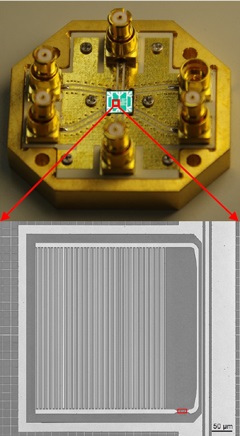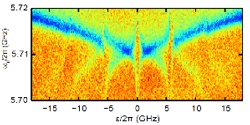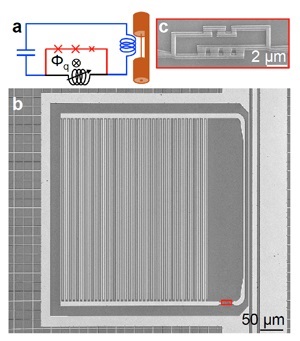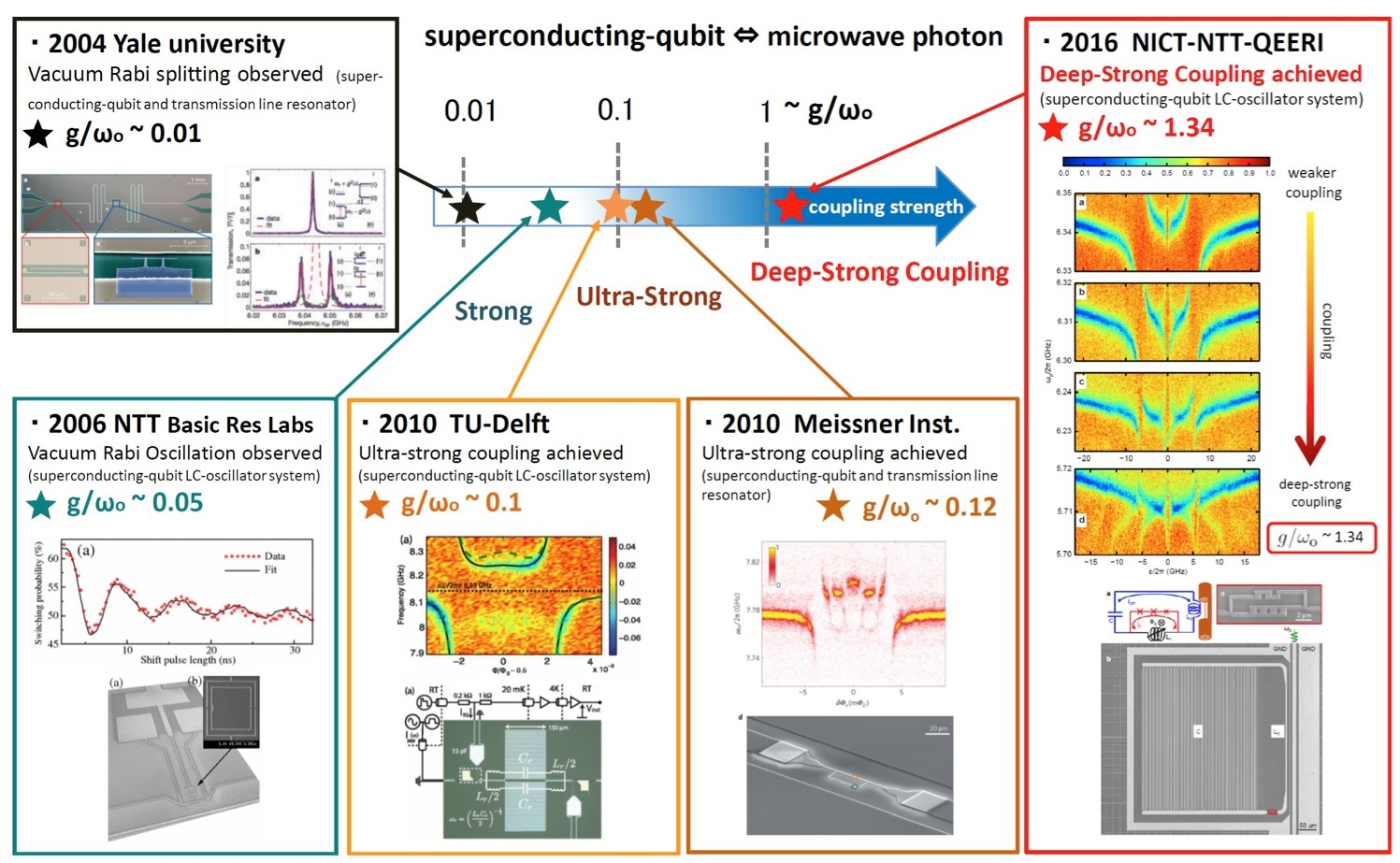October 11, 2016
NICT, in collaboration with researchers at the Nippon Telegraph and Telephone Corporation (NTT, Representative Member of the Board and President, Mr. Hiroo Unoura) and the Qatar Environment and Energy Research Institute (QEERI, Acting Executive Director: Dr. Marwan Khraisheh) have discovered qualitatively new states of a superconducting artificial atom dressed with virtual photons. The discovery was made using spectroscopic measurements on an artificial atom that is very strongly coupled to the light field inside a superconducting cavity. This result provides a new platform to investigate the interaction between light and matter at a fundamental level, helps understand quantum phase transitions and provides a route to applications of non-classical light such as Schrödinger cat states. It may contribute to the development of quantum technologies in areas such as quantum communication, quantum simulation and computation, or quantum metrology. This result will be published online in the October 11 issue of the journal Nature Physics.
Background and Challenges
The indispensable technologies in modern life such as a time system measured by an atomic clock and a secure and energy-efficient communications system are based on the fundamental science of the interaction between light and matter at the single-photon level. The absorption and emission of light from any device is explained based on the interaction of light and atoms. A fundamental question in atomic physics, “How strong can the coupling of light and an atom be?” has not been answered in spite of years of research, because it is not easy to find appropriate methods to realize very strong coupling.
It was predicted over forty years ago that if the coupling is extremely strong a qualitatively new lowest energy state (the ground state) of light and an atom should be realized. A debate soon started as to whether this prediction would still apply when realistic conditions are considered. A few years ago, our collaborator at QEERI, Dr. Sahel Ashhab, performed theoretical investigations and identified desirable conditions for achieving this new state using superconducting circuits.

Figure 1 Experimental device
The chip mounted on a sample holder (top), and a laser microscope image of the circuit comprising a superconducting qubit (red rectangle) and oscillator.
In the experiment, the researchers have used a microfabricated superconducting harmonic oscillator and a superconducting artificial atom (quantum bit or qubit) whose electronic states behave quantum mechanically, just like a natural atom. By carefully designing a superconducting persistent-current qubit interacting with an LC harmonic oscillator that has a large zero-point fluctuation current via a large shared Josephson inductance (see Fig. 1, Fig. 3), they found the new ground state as predicted theoretically (see Fig. 2).
The total energy of the qubit and the oscillator is the sum of the photon energy in the oscillator, the qubit energy, and the coupling energy binding the photons to the qubit. Taking advantage of the macroscopic quantum system, the researchers could realize circuits with coupling energy larger than both the photon energy and the qubit energy. This situation is sometimes called ‘deep strong coupling’ (see Fig. 4).
In addition, they have observed that the transitions between energy levels are governed by selection rules stemming from the symmetry of the entangled energy eigenstates, including the ground state.

Figure 2 Spectrum of the new states
Transmission spectrum as a function of the probe photon frequency (vertical) and the bias energy of the qubit (horizontal). The main features of the spectrum can be understood if and only if we assume the existence of a stable molecular state of photons and the artificial atom.
The researchers plan to test whether deep strong coupling is possible or not using more than one superconducting artificial atom (qubit), which remains a question of debate. We will also try to actively manipulate this new molecular state of photons and artificial atoms, for example, to observe and control the dynamics of photon absorption and emission, and to demonstrate new methods of entanglement generation.

Figure 3Superconducting qubit-oscillator circuit
a. Circuit diagram. A superconducting flux qubit (red and black) and a superconducting LC oscillator (blue and black) are inductively coupled to each other by sharing a tunable inductance (black).
b. Laser microscope image of the lumped-element LC oscillator inductively coupled to a coplanar transmission line.
c. Scanning electron microscope image of the qubit and the coupler junctions located at the red rectangle in image b. The coupler, consisting of four parallel Josephson junctions, is tunable via the magnetic flux bias through its loops.
Paper:
Nature Physics (DOI: 10.1038/NPHYS3906)
URL: http://www.nature.com/nphys/index.html
Title: Superconducting qubit-oscillator circuit beyond the ultrastrong-coupling regime
Authors: Fumiki Yoshihara, Tomoko Fuse, Sahel Ashhab, Kosuke Kakuyanagi, Shiro Saito and Kouichi Semba













